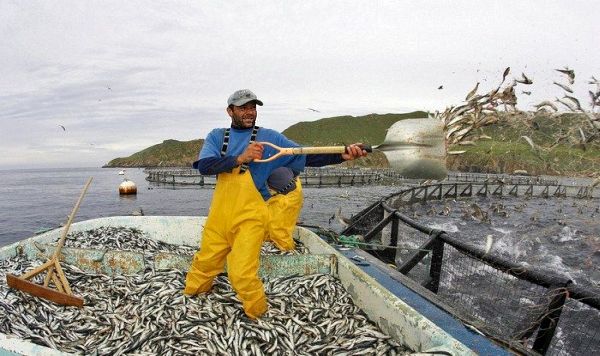CNBC - Fish eaters of the world, we have a tuna problem. And a portion of the blame lies with Mexico.
The overfishing and increasing scarcity of Pacific bluefin tuna has created an opportunity for "tuna ranchers" who catch live young fish, fatten them up, and sell them to the global sushi market at premium prices. Many of those so-called ranchers lie south of the border in Mexico, and are snapping the fish up in record numbers.
The Pacific bluefin tuna is one of the species of tuna rapidly disappearing from the world's oceans, in part because we love to eat it. Fatty cuts of bluefin tuna belly are some of the most highly coveted cuts of fish in sushi restaurants in Japan and around the world.
Although the Japanese are by far the world's largest market for the fish — they consume about 80 percent of the total catch — its popularity is growing around the world along with the demand for delicate sushi and sashimi.
Enter Mexican fisherman, who play an unusual role in keeping that market stocked. The US's neighbor to the south is one of the world's largest harvesters of Pacific bluefin tuna, behind Japan — and even outstripping the fish-loving havens of United States, China, and Korea. The price of tuna is high, in part, because the fish is increasingly scarce.
This popularity has decimated the fish's numbers. The International Union for the Conservation of Nature (IUCN) listed the Pacific bluefin as a "vulnerable" species in November, when it also listed the poisonous puffer as under threat. The group publishes the "Red List," a compilation of species whose numbers are threatened.
 |
| Fresh farmed bluefin tuna sashimi |
Tuna's high price also perpetuates the problem. A significant portion of the Mexican catch is fished in nets and kept alive. Then the fish is transferred into pens in the ocean near Ensenada. It's a costly process.
"It's actually not very economical" said Bruce Collette, a fish scientist at the Smithsonian Institution, who acts as an expert for the IUCN's RedList. "It takes so many of these small fish to get one of these tuna to the size they want to sell it at....If tuna weren't so expensive, this would never be economical to do."
Tuna: More Pricey Than You Think
Collette said that the fish can survive in cold water and in warm — which is unusual for tuna species, which tend to prefer warmer waters. Because they can swim great distances, it makes it easier for fishermen to nab the fish, hence their captivity in Mexico. Most of the fish caught there were actually born in waters near Japan or Korea.
Over time, tuna can grow quite large—up to the size of a small car. In one specific case, a Japanese auction sold one for a whopping $1.7 million at a fish market.
However, the primary threat to the bluefin is the overfishing of young fish — those that have yet to spawned a new generation, according to the IUCN. A lot of that happens in the Western Pacific Ocean near Japan. But the Japanese have made commitments to more closely monitor fishing in order to protect the stocks.
Mexico is not the only country with so-called tuna ranches. Significant quantities of all three species of bluefin can end up in ranches along the south coast of Australia and the Adriatic Sea.
Overall, the stocks of all tuna species have declined drastically over the last several decades. Populations have declined between 80 percent and 90 percent of what they were when Collette first went fishing in 1958, he said. "There are too many boats trying to catch too few tuna."
Original Story


